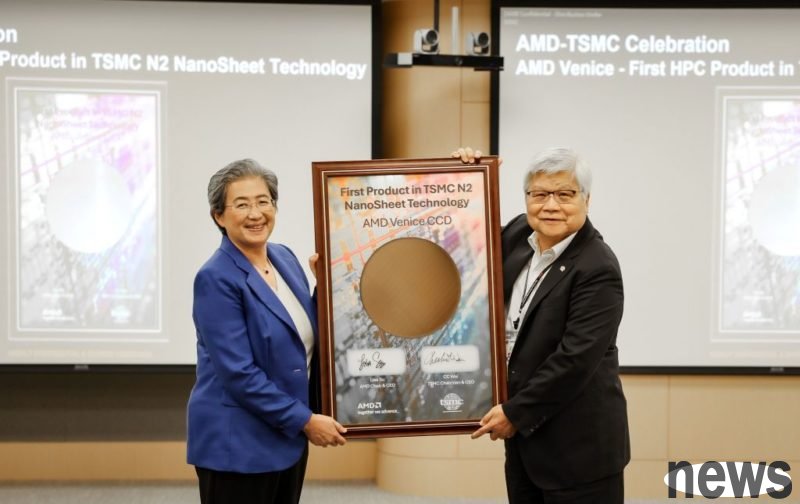When the chip manufacturer AMD recently announced its third quarter 2025 financial report, it not only delivered a dazzling revenue report, but CEO Dr. Lisa Su personally confirmed that its next-generation data center flagship chips using the most a...

When the chip manufacturer AMD recently announced its third quarter 2025 financial report, it not only delivered a dazzling revenue report, but CEO Dr. Lisa Su personally confirmed that its next-generation data center flagship chips using the most advanced process technology, the 2-nanometer process EPYC Venice Zen 6 CPU and Instinct MI400 AI chip, are proceeding as planned and will be officially released in 2026 as scheduled.
Su Zifeng reiterated in the financial report conference that the next generation EPYC Venice series processors will use TSMC’s 2nm process technology and be equipped with Zen 6 architecture. She confirmed that the Venice chip is currently in the laboratory stage and performing extremely well. Compared with the previous generation Zen 5 architecture Turin CPU, Venice has achieved substantial growth in performance, efficiency and computing density.
AMD stated that customers’ purchase intention and participation in Venice series processors are stronger than ever before, reflecting its competitive advantages and the market’s growing demand for data center computing. Even more notably, multiple cloud OEM partners have already put the first batch of Venice platforms online for testing, preparing for broad solution availability and cloud deployment when the product launches in 2026.
Su Zifeng pointed out that in the rapidly developing AI field, the Helios rack server solution equipped with the next-generation Instinct MI400 AI chip and Venice CPU is facing increasing development momentum. The MI400 series is designed to provide a significant increase in performance for the execution of the most demanding AI training and inference workloads. Key specifications of the MI400 series include computing output of up to 40 PFLOPs, memory configuration of 432 GB HBM4 memory, and memory bandwidth of 19.6 TB/s. Moreover, the MI400 series combines a new computing engine, industry-leading memory capacity and advanced network functions to compete with NVIDIA's Rubin series.
Su Zifeng emphasized that the MI400 series has received orders from multiple heavyweight customers before its official release. For example, Oracle announced that it will become the first major partner of the MI450 series and plans to deploy tens of thousands of MI450 GPUs in Oracle Cloud Infrastructure starting in 2026 and continue to expand deployment after 2027.
OpenAI announced a partnership with AMD to purchase a total of 6GW of Instinct GPUs, including 1GW of next-generation MI450 GPUs. The U.S. Department of Energy (US DOE) has also selected the upcoming MI430X GPU and EPYC Venice CPU to power its next-generation flagship supercomputer "Discovery" in Oak Ridge. The system aims to set the standard for AI-driven scientific computing.
As for the client terminal business, Ryzen 9000 desktop CPU remains the main revenue driver. With its excellent performance in gaming, productivity and content creation applications, sales have reached record highs in recent months. In the third quarter of 2025, AMD’s gaming division revenue increased by 181% year-on-year to $1.3 billion. This was mainly due to growth in the semi-custom business, as Sony and Microsoft prepare to sell game consoles for the upcoming holiday sales season. Additionally, Radeon RX 9000 GPUs are starting to approach MSRP, and adoption of machine learning upgrade technology FSR 4 has been rapid, with the number of supported games more than doubling since launch to over 85.